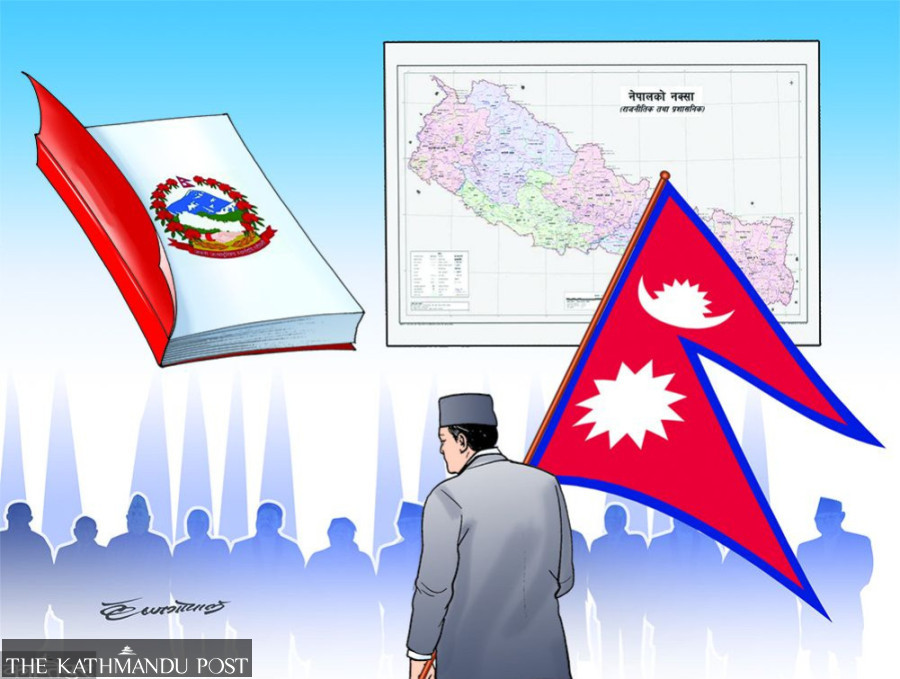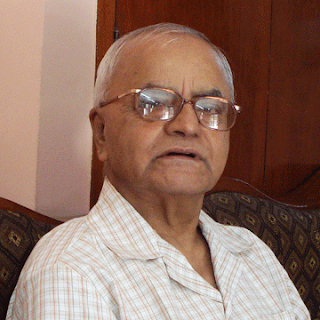Columns
Strong state, weak governance
Sovereignty of the state can be preserved only through prudent domestic and foreign policies.
Lok Raj Baral
Compared to other countries in the world, Nepal is neither small nor devoid of the huge potential of being strong. Among the four state elements—sovereignty, territory, population and government—Nepal fares well in three but governance. Its strength lies in its capacity to endure overbearing upheavals that occasionally occur. Since the Anglo-Nepal War (1814-15), which led to the signing of the Sugauli Treaty, Nepal has not compromised its territory. This has been possible through timely, realistic foreign policy within the parameters of bilateral treaties with India and China. Such trends continue even today, despite the extension and diversification of policies.
Popular movements have overthrown regimes ranging from Rana autocracy to monarchy; power has transferred smoothly from traditional monarchy to republic. The Nepali state thus remains unruffled by the general belief that monarchy and Nepal’s existence were coterminous or that one could not survive without the other. The Nepal Army, considered the mainstay of power and had served the Ranas and the Shahs, changed its status by supporting the new democratic republic.
The Nepali state did not realise any threat to its existence during the 10-year-long Maoist insurgency or later in the wake of instabilities triggered by political parties. But it must be admitted that political parties have acted in unison while facing major political crises or defending the cause of democracy. They steadfastly proclaimed the republican constitution in 2015, resisting outside pressure to defer its announcement to make it more inclusive by addressing the demands of Madhesh parties. Nevertheless, a common feeling is that major political parties have failed to deliver on the minimum aspirations of the public as they are excessively indulged in petty personal and party interests. As a result, the governance crisis, fraught with dangers to other state elements, persists.
Since sovereignty and fixed territory are the major elements, the Nepali state has a solid border stretching from the Mechi River in the east to the Mahakali River in the west, Tibet (China) to the north and India to the south (on three sides). Nepal has maintained a fixed boundary with its neighbours for over 200 years. It is highly unlikely that the country’s sovereignty and territorial integrity will be jeopardised in the future because of geopolitical limitations that prevent us from being cavalier in handling foreign policy.
Moreover, strategic autonomy, often used as a cliché in international relations, is a relative term employed only when allowed to do so in the given political context. All powers, big or small, strong or weak, have limitations and cannot always independently act as they want. The United States, China, Russia, or any other power cannot impose their respective decisions in the face of counter-actions to be undertaken by other hostile powers. For instance, the Russian invasion of Ukraine or China’s restraint on taking strong action against Taiwan, despite displaying aggressive postures, are some examples of limited autonomy of powers. Russia is badly entangled in its invasion of Ukraine, as the Western powers and a few others have not only condemned the Russian aggression but also taken countermeasures to foil its mission.
The sovereignty of the state can be preserved only by relying more on prudent domestic and foreign policy, not on arming the state to the teeth. It is particularly so in Nepal’s context, whose very location does not allow it to be indifferent to the sensitivities of its neighbours, China and India. Such limitations have helped maintain Nepal’s long civilisational tradition and history of an independent sovereign nation-state. Fixed territory, recognition of independence and sovereignty buttressed by sound external policy are the country’s strengths.
Recurring issues of minor territorial disputes with neighbours do not amount to the loss of settled international borders. Interestingly, in Jhapa, there are two places, Satighatta and Kechana Kawal, where Nepal’s border extends across the Mechi River, creating enclaves like those found in other countries. Surprisingly, no territorial disputes concerning these enclaves have arisen between Nepal and India, but the grudges of local Nepali citizens for being ignored by the state haunt the rulers.
People who constitute an element of the state can be described according to the nature of the regime. In traditional monarchical regimes, as were prevalent in many countries of the world, people were/are treated as raiti or praja (subject), having no freedom of expression against the rulers. In such regimes, subject political culture prevails, thus forcing the people to be indoctrinated accordingly. Contrarily, in a democracy, people participate in the political process, which makes the government responsible for them. Popular legitimacy is, therefore, the essence of democratic governance. When such legitimate rights are denied, people revolt against the regimes, as happened in Nepal in 1990 and 2006.
Legitimacy has different dimensions that transcend economic, political, social and international. It can be broadly called performance legitimacy, which is concerned with governability. If the system fails to cater to the minimum needs of the general public or fails to reduce socio-economic disparities, then the system begins to face mounting challenges that sometimes turn into rebellion. So, governance and legitimacy are inextricably linked. Today, liberal democracies or authoritarian regimes with limited pluralism seem to confront the crises of performance legitimacy and are increasingly becoming vulnerable to uncertain developments.
Nepal’s social structure is solid, as the people live in peace and harmony amid socio-political degradation and despair. Social scientists prefer to call such a matrix as syncretic and synthetic. Religious bigotries are little known to Nepalis. Nevertheless, since the primacy of politics is well accepted, political parties have invariably failed to set an example by demonstrating their governability. Yet, Nepal’s exercises are not as alarming as many pundits tend to present. The country has been able to manage crises that creep into the body politic. The elected leaders are expected to be more sensible in consolidating the gains of the new democratic order.




 17.12°C Kathmandu
17.12°C Kathmandu















